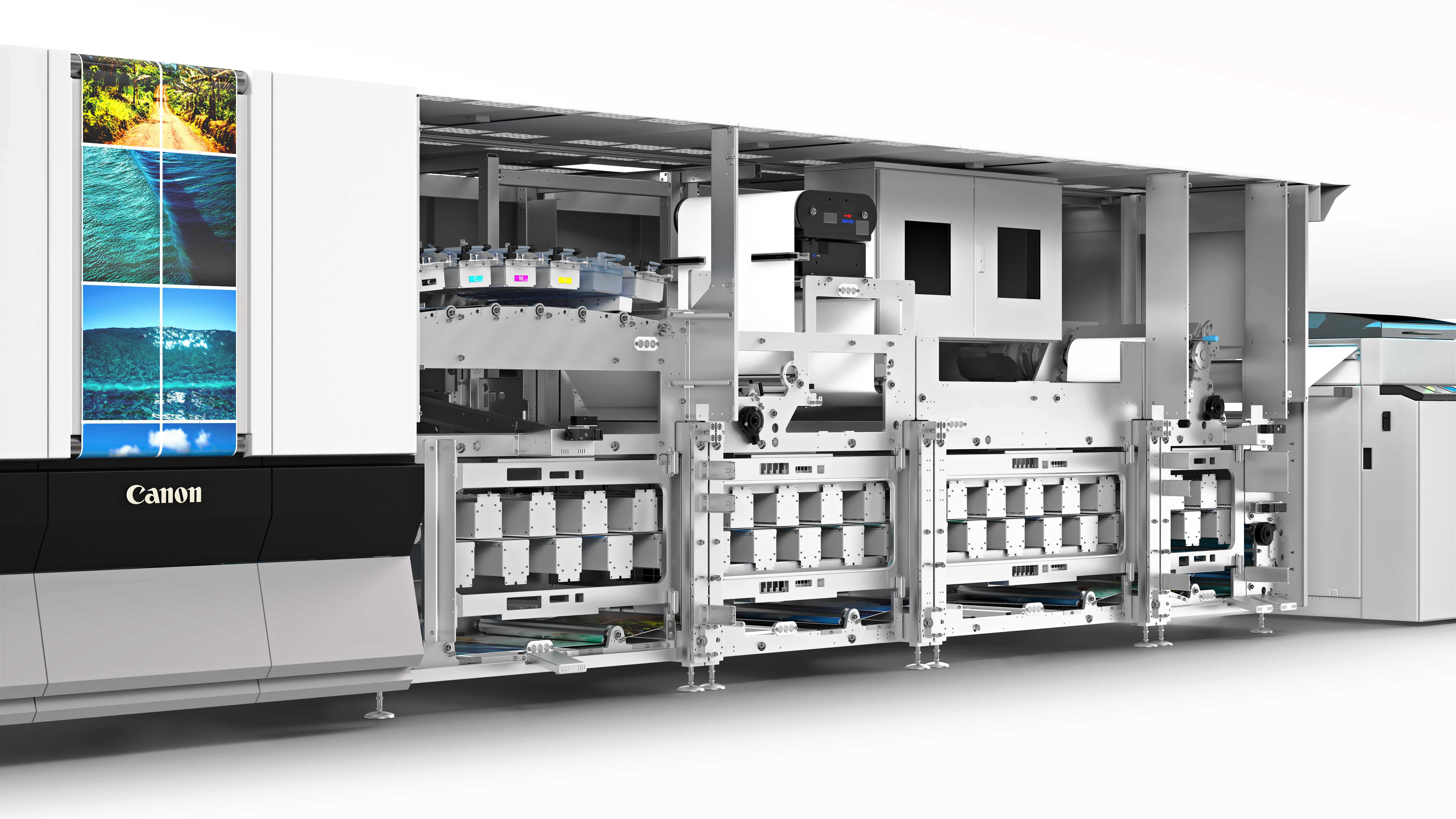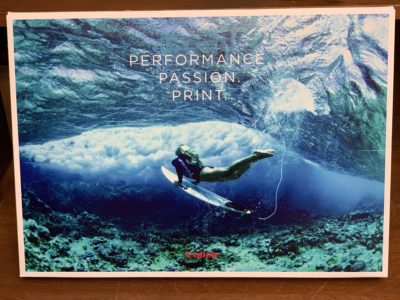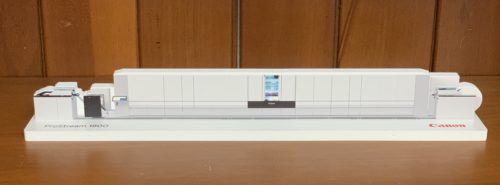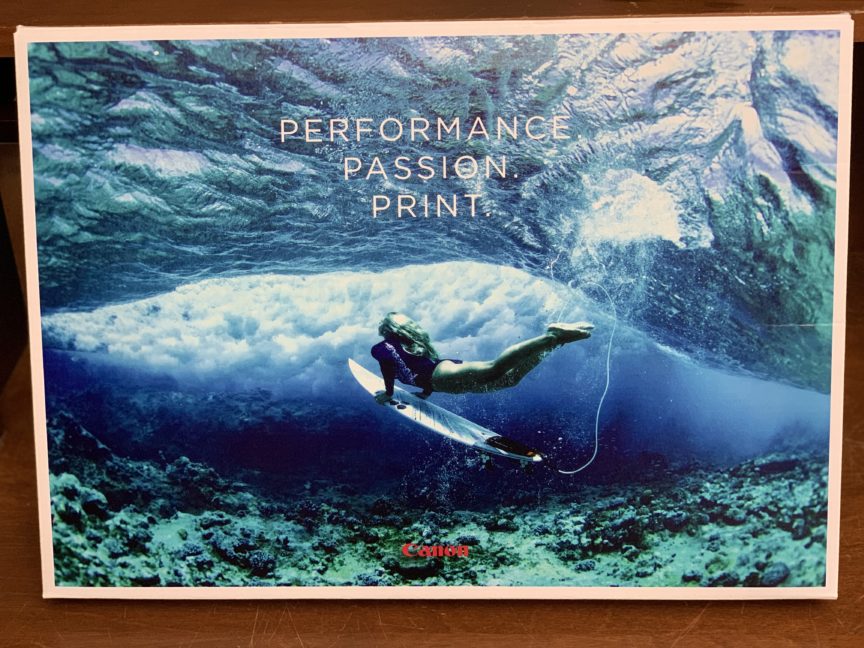The web fed inkjet market has taken great leaps forward in recent years. The already wide array of presses targeting the transaction, direct mail and book market have been complemented by devices targeting a noticeably higher quality range and a wider paper latitude – including standard offset papers. While the devices targeting established application segments have improved in speed and quality in recent years, the new generation devices are lifting the quality and paper range to a level at which they rival offset print. Accordingly, these devices can now target a variety of markets traditionally, and almost exclusively, served by offset print.
In 2017, Canon launched the ProStream 1000 and started shipping in 2018. To date, 40 duplex lines (80 towers) have been installed worldwide. While this volume pales in comparison to the 1,400 Canon ColorStream installations announced recently, the ProStream is intended for markets way out of the comfort zone of traditional digital print equipment suppliers such as Canon. The Prostream 1000 successfully enabled migration of high-volume and high-value work from offset to inkjet without the need for specialized papers and convinced a challenging market segment to make changes. Ralf Schlozer, covers the European market for Inkjet Insight noted, “It is remarkable that commercial printers and on-line printers took up the ProStream, with Pixart in Italy and Exacta in Sweden being among the latter. These users are complemented by book and direct mail printers aiming for a high-quality level.” Canon has stated that there are customers who have installed second lines or are even moving to a third device to handle the volume proving that with the right mix of quality and flexibility, this market can be penetrated by inkjet.
This week, Canon made the next step: upping the speed and productivity of the ProStream by launching the 1800 model.

Canon ProStream 1800
Canon’s roadmap calls for increasing productivity in order to improve the cost model and break-even against offset. The ProStream 1800 features a speed of 133 m/min, which is 66% faster than the ProStream 1000. It delivers top productivity of 1,790 A4 images per minute (107,500 per hour). Full speed is available for weights from 40 to 160 gsm. For heavier stocks, from 160 to 250 gsm, the speed drops to 80 m/min – which is the speed of the ProStream 1000. Like most devices with multiple speed modes, the downside of the improved speed is a lower imaging resolution. At the highest speed, the resolution (in imaging direction only) from 1200 to 720 dpi. Nonetheless, a 1,200 x 720 dpi resolution this is substantially above the 600 dpi of previous generation devices.
As in the ProStream 1000, Canon’s polymer pigment ink is used, offering a color gamut noticeably larger than standard offset. At top speed, the gamut shrinks a bit, but is still similar to the gamut achieved in offset print. Canon sent a package of very rich color samples and machine specifications to a few analysts, including me and Ralf, as part of their launch announcement. “The full speed samples are quite impressive” in Ralf’s opinion. “They all show strong and bright colors, good saturation and fine details on standard gloss coated paper and underscore the claim that web fed inkjet quality can rival offset. It does not seem that the higher speed is reducing the quality markedly.”
Keep in mind that the ProStream, like the VarioPrint i and iX- Series uses Canon’s ColorGrip primer to allows the wide paper latitude and compatibility with standard offset paper. The primer is jetted and can be adjusted to provide the correct amount needed for each paper but unlike the iX series, it cannot be selective jetted on specific locations.
As the most noticeable change to the 1000, a post-press temperature control unit was added as an additional box behind the printing unit. Many other features are unchanged from the 1000 model, such as the air flotation drier. Canon believes that air flotation provides the best balance of drying without damaging the paper. The air flotation drier follows the same principle as a heatset offset drier, but it is unique in inkjet so far. The web passes between 2 arrays of hot air nozzles with nozzles alternatingly positioned above and below the web. The web is actually held afloat by the nozzles and does not touch any rollers. The hot air and air flow does evaporate the water to dry the ink. In a final step the web is cooled again. Sensor temperature control has been added to maintain optimal drying conditions and to save energy. The control system is highly adaptive for the wide range of paper supported and uses statistical processing to take into account effects like the ink locally cooling the paper.

Interior – Canon ProStream 1800
Options recently launched for the ProStream 1000 are also available for the 1800 model. Those include a heavy paper kit and Inline Quality Control (IQC) introduced last year. Watch our exclusive video interview with Tom Leibrandt from July 2019 that covers these enhancements. The heavy paper kit expands the paper weight limit to 300 gsm supporting applications like postcards. The IQC is a camera system jointly developed with a third-party control supplier. It has two functions: assuring nozzle uniformity and compensating for nozzle failures. This improves the print quality, especially in gradients, and reduces downtime as nozzle failures are detected and compensated automatically. IQC is an option, but not an inexpensive one. Canon did not give exact pricing but said that that system price would be “a low 6-digit figure” investment. Ralf notes that in the EU market, “We are still waiting for a camera system to drop below the $100k mark. While I see the advantages and agree that this can be a worthwhile investment, the initial cost in the relation to the press price might deter some possible users.”
While the recent iX series announcement from Canon did not provide an upgrade path for current iSeries users, the ProStream 1800 is available as a field upgrade to all existing ProStream 1000 users. Field upgradability has been a priority for most areas of the Canon inkjet portfolio and it is good to see the ProStream platform continuing in that mode. The upgrade path will vary based on what upgrades the Prostream user has already elected. For an upgrade, the 1000 users can keep the existing inkjet bars with the consequence that the resolution drops as the speed is increased. There are still 3 hardware upgrades necessary:
- Postprocessing unit – this is a new box added after the printing units
- Upgrade blowers in the flotation drier – this is not necessary anymore if the user already upgraded their ProStream 1000 with the heavy paper kit
- Upgrade DFE for faster data processing
The ProStream was meant to be launched at drupa 2020, but with the show being moved to 2021 Canon did not want to wait longer. The 1800 model is available now, with Grafica Veneta in Italy being the first user. Grafica Veneta is one of the largest book printer in Europe. They still mostly rely on offset and entered digital print quite late. Besides the ProStream 1000 the company uses a ColorStream mono press. Now Grafica Veneta has upgraded their ProStream 1000 creating the first 1800 in the market. Canon expects that many other users will upgrade to take advantage of the improved speed.
With the ProStream, Canon has created an inkjet printer that can rival offset in quality and paper range. Despite inkjet’s unique advantages like variable data and instant format switching, the major limiting factor for a bigger inkjet adoption is still the break-even point. Ralf adds, “Printers need enough low run volume to make an inkjet investment worthwhile. Better economics will drive the break-even up and enlarge the pie available for digital.” The speed upgrade of the 1800 increases productivity and, as a result, improves the cost base, while supporting tighter turnaround and higher peak volumes. The move to the 1800 is not a game changer, but it can make the crucial difference in the ROI. In this respect we expect the installation rate to increase despite the current market insecurity due to COVID-19. Canon has the opportunity to upgrade current ProStream users as well as open new doors in commercial printing. The Prostream and iX series enhancements are a powerful combination for handling high volume web volume along with mixed media jobs and reprints.
In addition to working with their existing customer base, Canon has done an excellent job in engaging with analysts around the world and providing detailed specifications on the ProStream, as well as insight into their roadmap and goals. Each analyst on the launch call was sent box with extensive samples, and even a pop up model of the new press (yes, I put mine together right away.)

Box of samples and specifications

Inside of box, open sample booklet and pop up Prostream 1800

Assemble your own ProStream 1800!
Canon’s tagline for the ProStream 1800 launch is “Performance. Passion. Print” and they certainly went the extra mile to ensure a successful launch. For analysts, like inkjet users, seeing is believing.
Note: this article was updated in October 2020 to correct information regarding IPM and use of primer.

